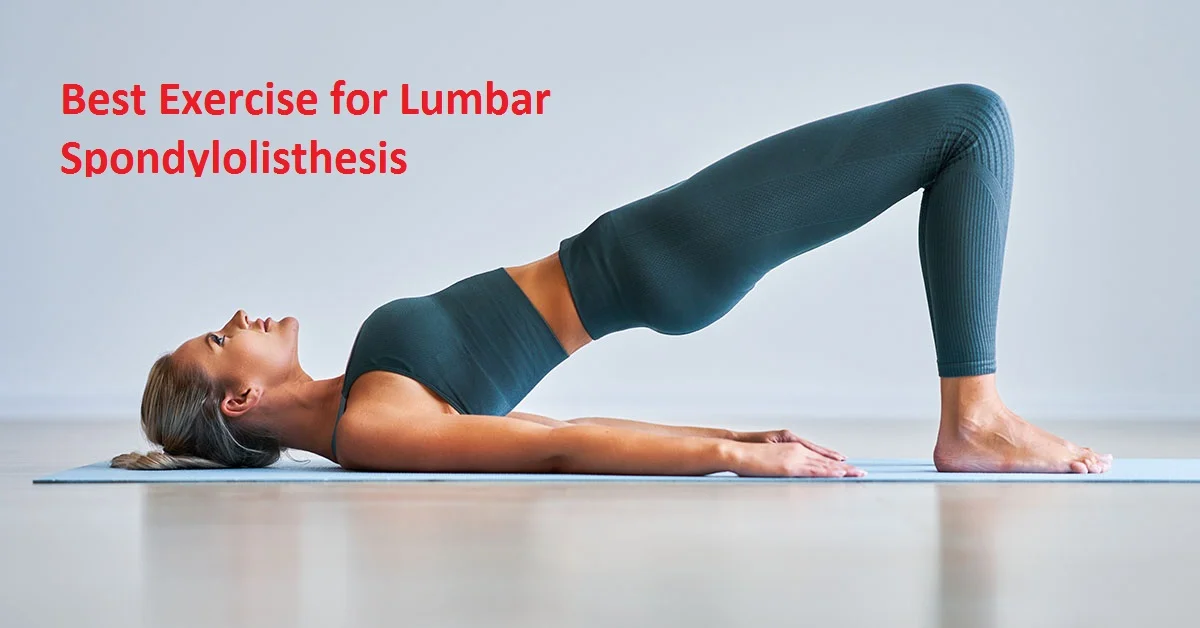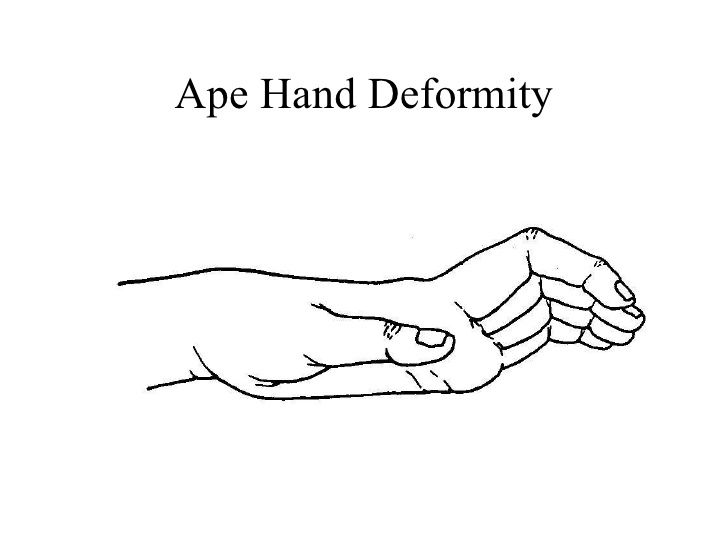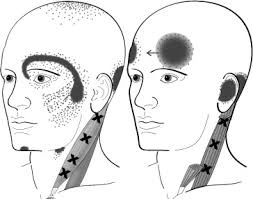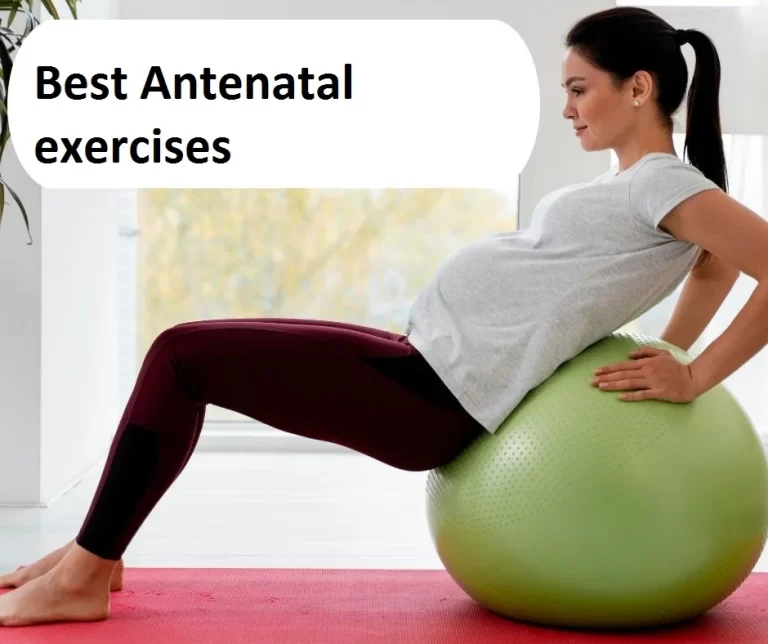Best Exercise for Lumbar Spondylolisthesis
Exercise is an important part of your overall treatment program for Lumbar spondylolisthesis. Exercise is help to strengthen your lower back, and provides stability and flexibility.
In This article we discuss what is a Lumbar spondylolisthesis, the Best exercise you can do at Home How to do it, which exercise you should avoid, and what precaution is required during exercise.
Table of Contents
Introduction
Lumbar spondylolisthesis is a condition where one vertebra slips forward over the vertebra below it in the lower back. It can cause lower back pain, sciatica, and other symptoms. It is important to consult with a healthcare professional before starting any exercise program, as the severity and type of spondylolisthesis can vary.
Types of spondylolisthesis include:
Congenital lumbar spondylolisthesis occurs when a baby’s spine does not form the way it should before the baby’s birth.
Isthmic spondylolisthesis happens as a result of spondylolysis. There are cracks or fractures of the weak bone.
Degenerative lumbar spondylolisthesis, the most common type, mostly happens due to aging. the disks that cushion the vertebrae lose water and as the disks thin, they are more likely to slip out of place.
Less common types of Spondylolisthesis include:
Traumatic lumbar spondylolisthesis happens when an injury causes vertebrae to slip.
Pathological lumber spondylolisthesis there is a chance of this spondylolisthesis occurring when a disease such as osteoporosis or tumor causes the condition.
Spondylolisthesis Symptoms
Sometimes, people with lumber spondylolisthesis do not notice anything is wrong. Symptoms include:
- Lower back pain
- Muscle tightness and stiffness
- Pain in the buttocks
- Pain spreading down the legs cause of pressure on nerve roots)
- Pain that gets worse with activity
- Tight hamstrings
- Trouble standing or walking
How common is Lumbar Spondylolisthesis?
Degenerative spondylolisthesis (which is caused by aging and wear and tear on the spine), is more common after age 50 and it is more common in females than males.
Grades of Lumbar spondylolisthesis
Low-grade (Grade I and Grade II) which do not require surgery. Low-grade cases are mostly seen in adolescents with isthmic spondylolisthesis.
Grade III and Grade IV may require surgery if you are suffering from a lot of pain or if the pain is not intolerable.

Exercises For Lumbar Spondylolisthesis
That being said, here are some exercises that may be beneficial for individuals with lumbar spondylolisthesis:
Pelvic tilt
Start by Lying on your back with the knees bent and the feet flat against the floor and then Pull your belly button toward the spine using your abdominal muscles and focus on pressing the low back flat against the floor and Hold this position for 5 to 10 seconds, and then relax. perform 15 repetitions of this exercise for spondylolisthesis.
Bridging:

To do Bridging Lie on your back on a soft mat or Bed with your knees bent and feet flat on the floor. Slowly lift your hips off the ground, keeping your shoulders and feet on the ground. Hold for 5-10 seconds and then gradually release.
Partial crunches:
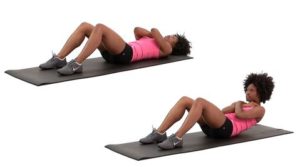
To do Partial crunches Lie on your back on a soft mat or Bed with your knees bent and feet flat on the floor. Slowly lift your head and shoulders off the ground, curling your upper body toward your knees. Hold for 5-10 seconds and then gradually release.
Dead bug
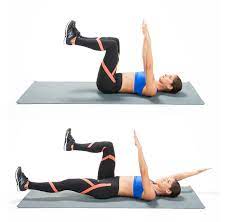
This dead bug exercise is a more advanced version of the pelvic tilt. start this exercise first you should bend your knees, feet flat against the floor, and arms at your sides and Draw the belly button toward the spine as you tighten the abdomen after that Keeping the legs bent, lift one of them off the floor and hold it for five seconds before lowering it to the ground and lift another leg for five seconds.
Next, you should lift one arm over the head; hold it for five seconds then lower it. Repeat with the other arm. Once this becomes easy then you can increase the repetitions, lifting a leg and the opposite arm at the same time and performing the sequence 5 to 10 times.

Gluteal stretch
First start with lie on your back with both knees bent and then rest the ankle of one leg against the knee of the other after that you should Grab onto the thigh of the bottom leg and pull it toward your chest until you feel a stretch in the buttocks and possibly the outer part of the hip and Hold this position for 15 to 30 seconds before switching legs. These stretches for lumbar spondylolisthesis should be performed three times for each leg.
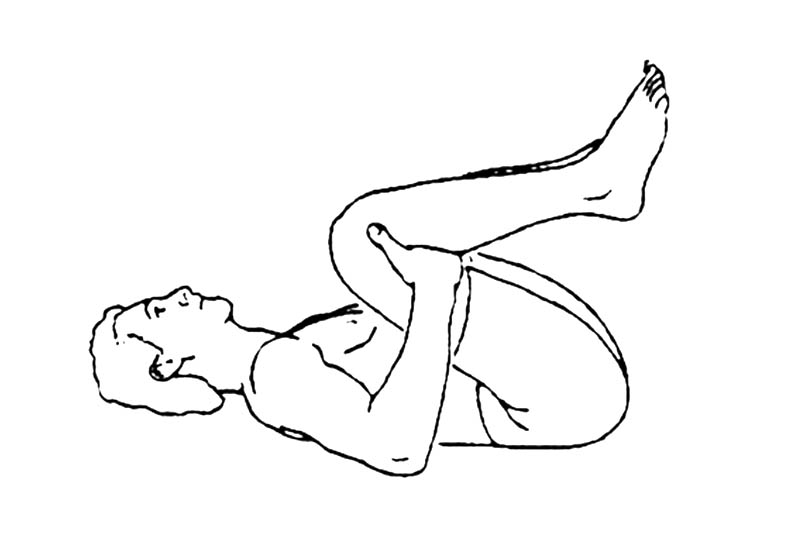
Double-knee to chest
This exercise is the same as the dead bug back exercise. First Start with the knees bent and feet flat against the floor and then tighten the abdomen to push the low back against the floor and lift both legs off the ground and pull them to the chest Hold this position for five seconds then lower the legs back down to the ground. Repeat 10 to 20 times.
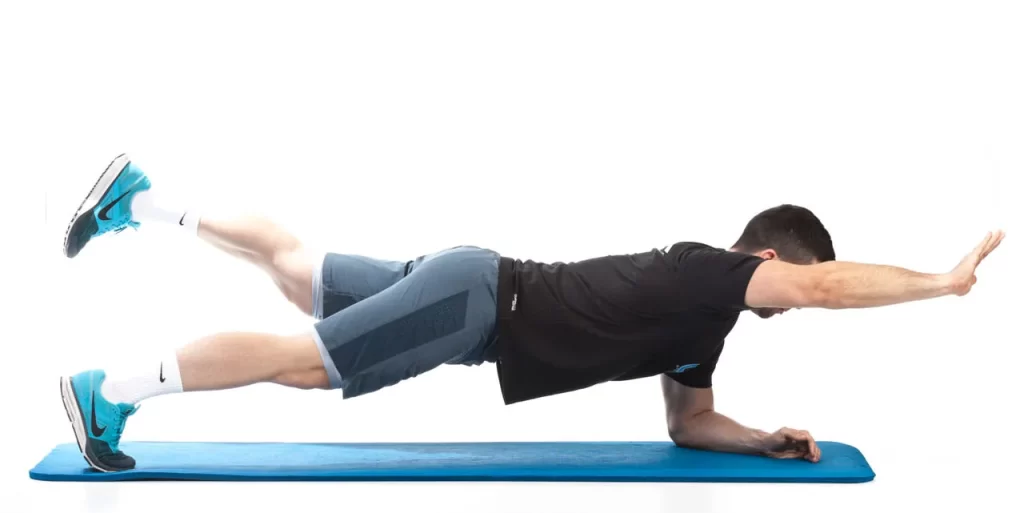
Quadruped arm/leg raises
For this back, exercises begin on your hands and knees after that tighten the abdominals and then raise one arm and the opposite leg you should Hold this position for 5 seconds and then lower the leg and arm to the ground and repeat this sequence with the opposite arm and leg. you should perform 5 -10 repetitions on each side.
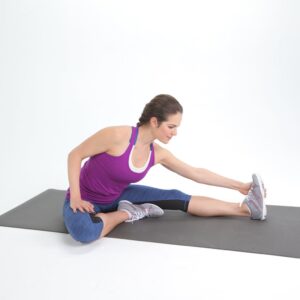
Hamstring stretch
Lumbar Spondylolisthesis may cause increased tension in the hamstring muscles so If hamstring muscles become tightened they can pull on your lower back and increase your pain you should take regular stretches of your hamstrings it helps to loosen them, alleviating the tension in your lower back. you should take regular hamstring stretches by a physiotherapist or healthcare.
There are two methods for hamstring stretching you should Sit on the floor with your legs straight out in front of you and your toes pointed toward the ceiling.
Another method is you should Lean forward slowly toward your feet until you feel a pull or stretch in your hamstrings. repetition should be 3 times a day with a 30-second hold.
Wall squats:

To do Wall squats Stand with your back against a wall and keep your feet shoulder-width apart. Slowly lower yourself into a squatting position, keeping your back against the wall. Hold for 5-10 seconds and then gradually release.
Remember to always follow to your body and avoid any exercise that causes pain or discomfort. It is also important to consult with a Physical Therapist before starting any exercise program.
3 Exercises to Avoid With Spondylolisthesis
Heavy weightlifting activity: Weightlifting, especially if you use improper lifting techniques, can take stress on your back in many ways. during lifting, the activity you are placing extra strain on your back, specifically on your lower or lumbar region. Read more about proper lifting techniques.
Twisting or bending activity: core exercises for spondylolisthesis can be increased the strength of your abdominal muscles and your back and make sure to avoid those that involve excessive twisting side or bending over such as toe touches. This activity may cause further injury to your spine and cause additional pain.
High-impact activity: it is important while spondylolisthesis, to stay away from those exercises that may cause pain or harm to your back. Exercises such as running, basketball, and football(they all are high-impact activities), etc. should not do until you are recovered fully.
Safety Considerations for Exercises
Keep in mind that all of the exercises you do should not cause you pain. They are supposed to help ease it. Avoid rapid movements or holding positions that you find painful. You should feel mild tension or gentle stretching. If the exercises cause you pain, try decreasing the number of repetitions, or holding the positions for fewer seconds Avoid heavy lifting, lifting with your back, and strenuous exercises.
If you feel some minor discomfort after performing these exercises, you should use an ice pack or an over-the-counter pain reliever to help. If the pain is severe, you can contact your doctor.
FAQ
Walking helps to maintain your muscles and joints mobile without placing extra pressure on your lower back, so it is often recommended for spondylolisthesis patients. Start with daily 10 or 15-minute walks, keeping your spine neutral and your shoulders relaxed and taking rest between the walk. walk maintain your whole body flexibility and maintain posture.
Some patients with spondylolisthesis feel the most pain relief while sleeping in a reclined position. The reclining position maintains or keeps your legs at an angle to your torso, which can minimize or reduce the stress on your spine which is a very relaxing position while sleeping.
If the spondylolisthesis increases with bending forwards and backward movements, it is termed unstable spondylolisthesis which is commonly associated with back pain it is called a stable spondylolisthesis.

